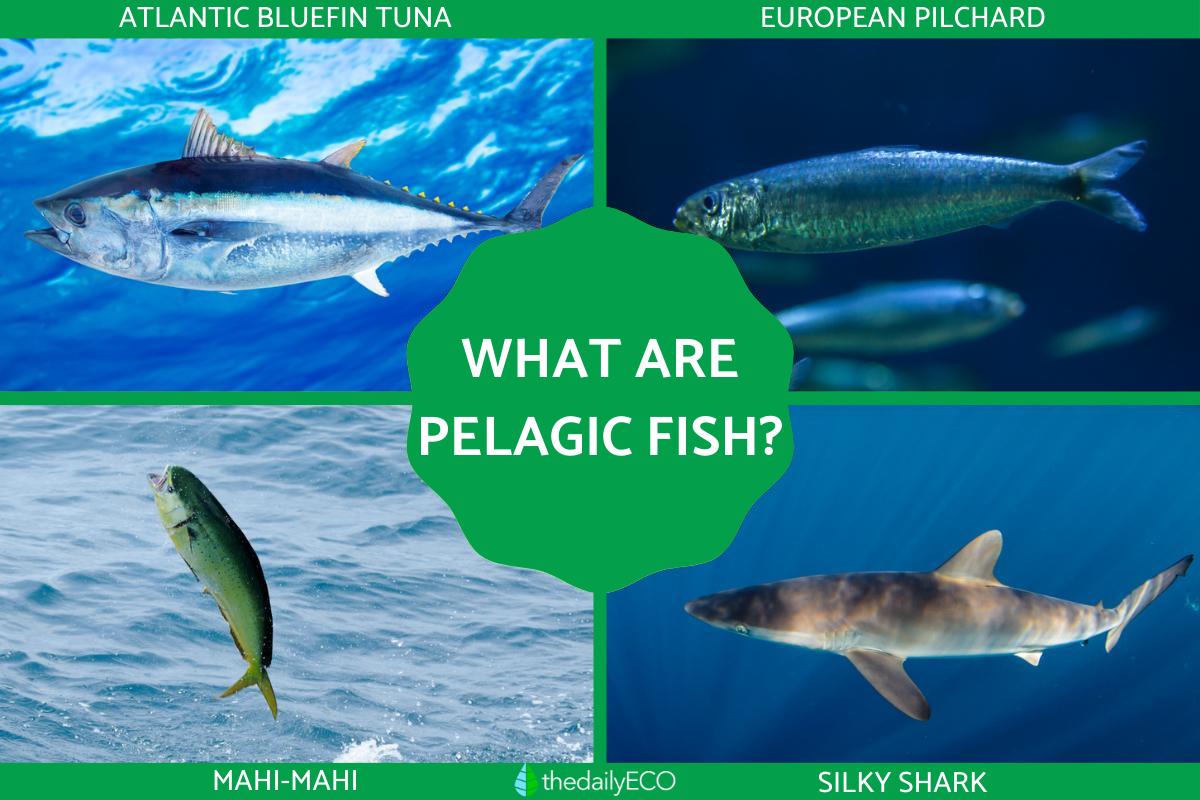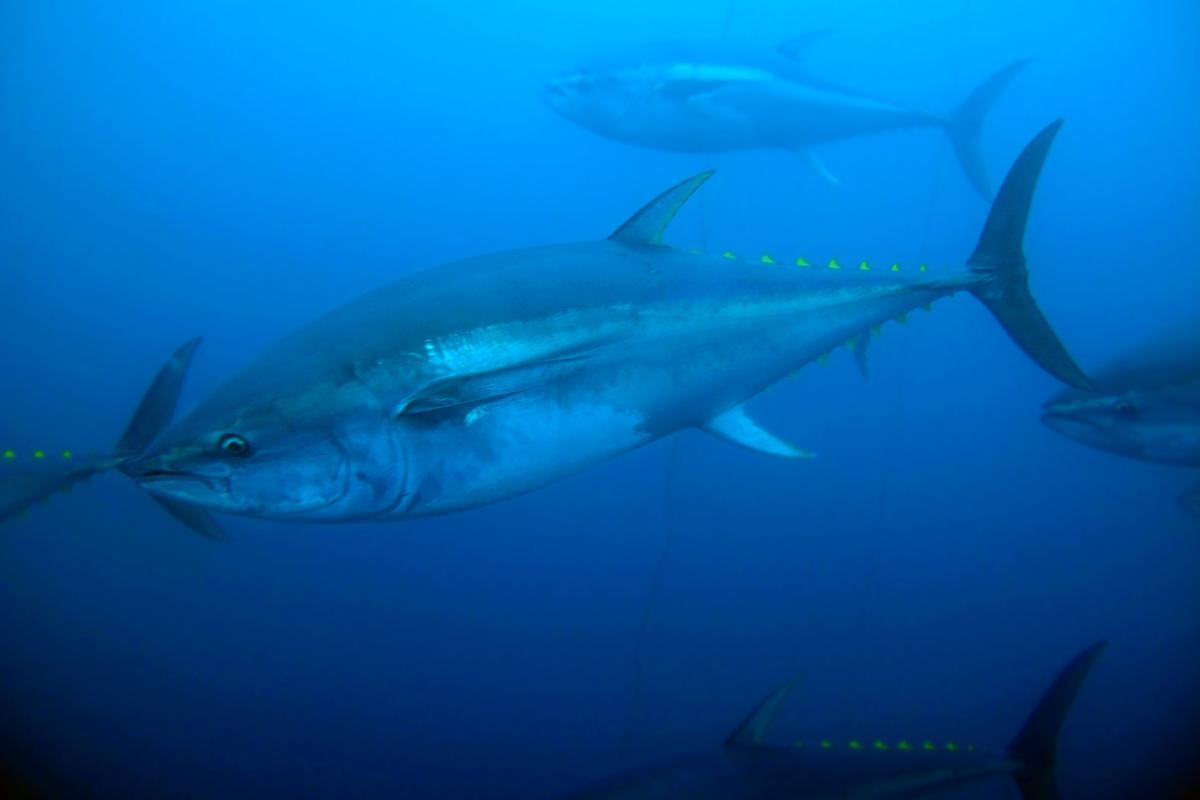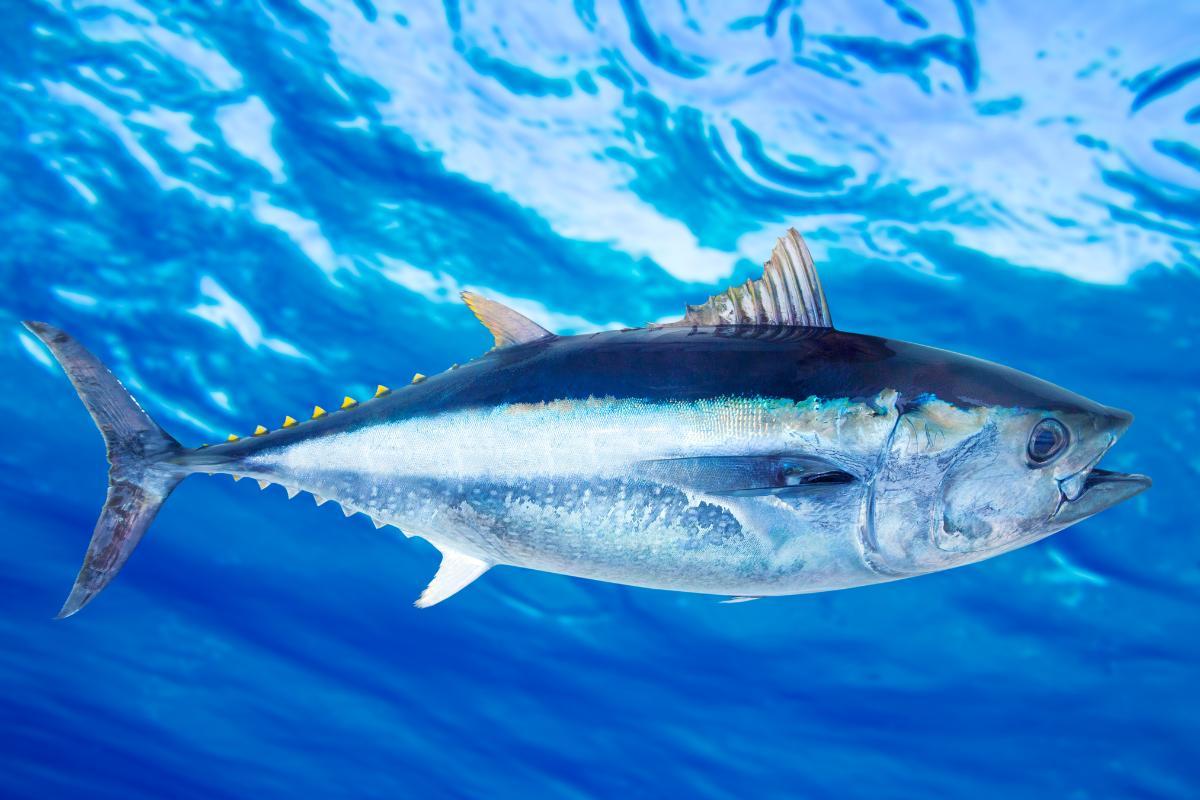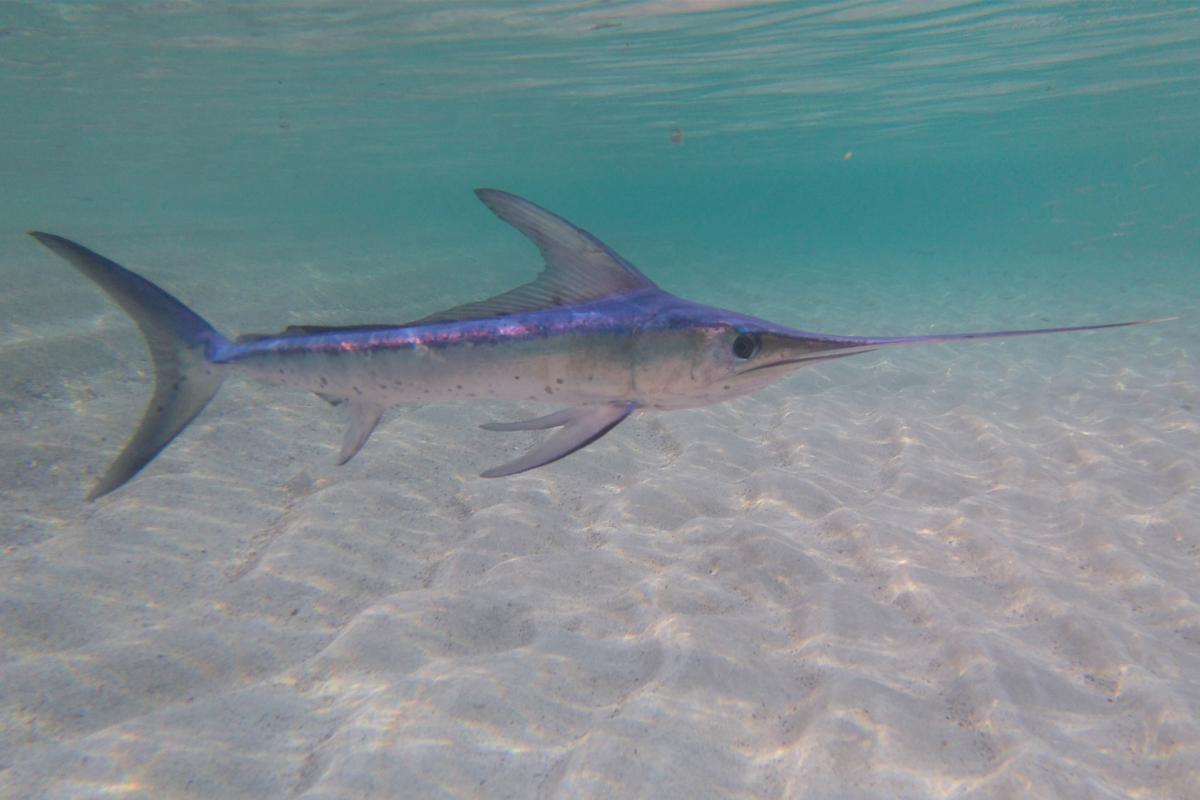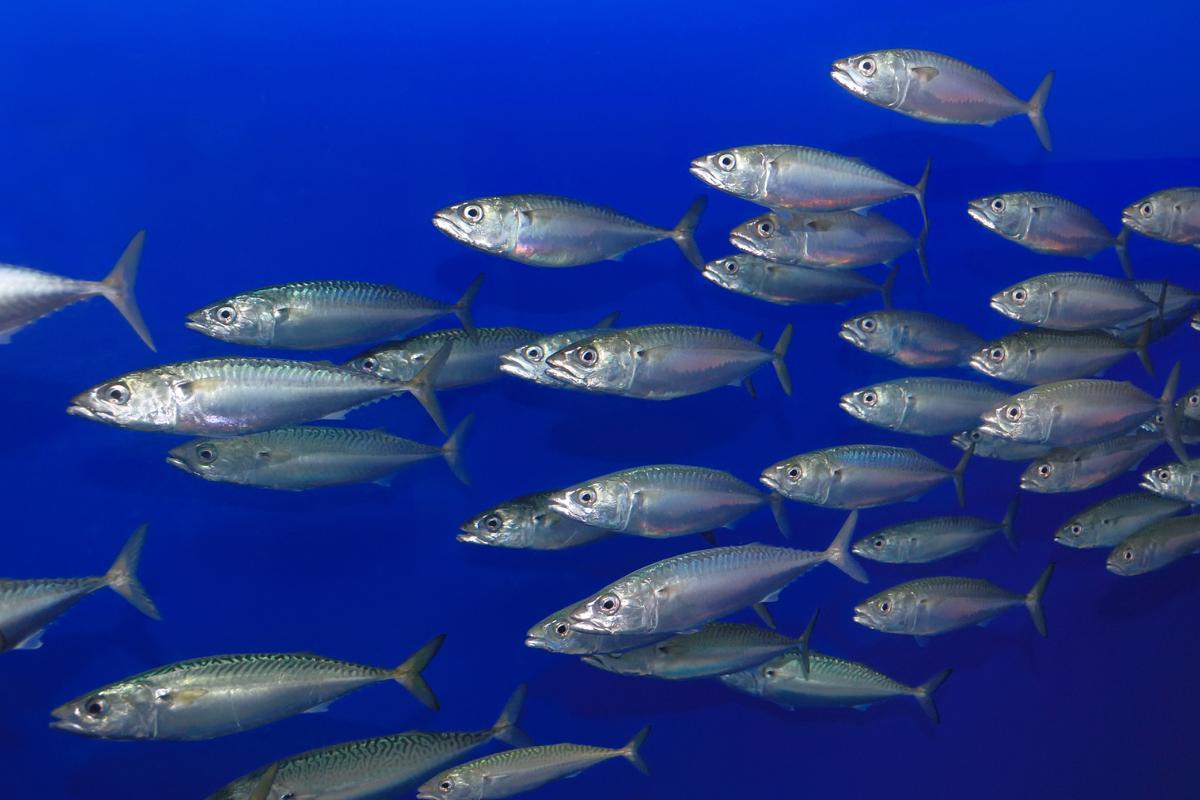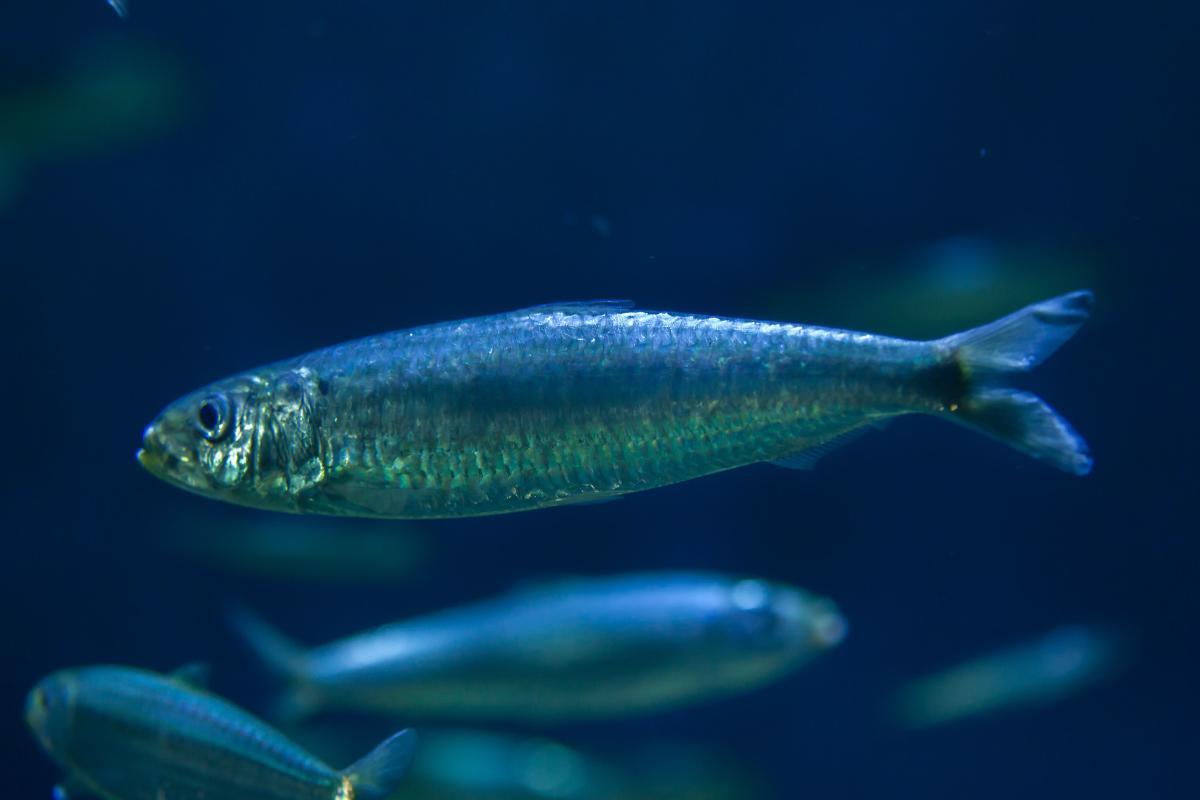What Is a Pelagic Fish?


Pelagic fish are a group of diverse fish species that inhabit the pelagic zone of the world's oceans. This zone is the vertical column of large bodies of water such as seas and very deep lakes which does not contain solid structures. Within the pelagic zone are different sublayers which differ in various characteristics, with the amount of sunlight they receive being one of the most impactful. With such expansiveness, it should be no surprise there is a rich diversity of animal life. A lack of substrate and minimal sunlight means there is little plant life, but the amount of fish is incredible. At thedailyECO, we examine what these pelagic fish species are by asking what are pelagic fish? We provide a definition as well as examples of fish in the pelagic zone.
- What are pelagic fish and their characteristics?
- Yellowfin tuna
- Atlantic bluefin tuna
- Swordfish
- Chub mackerel
- European pilchard
- Mahi-mahi
- Pacific sierra
- Wahoo
- Blue shark
- Silky shark
What are pelagic fish and their characteristics?
The very basic definition of pelagic fish are the fish that live in the pelagic zone. This is the vertical column of open water in seas and large lakes which excludes the areas closest to the substrate. It includes the areas closest to the sea surface, the photic zone where sunlight can penetrate.
Different layers of the pelagic zone have different characteristics, something greatly influenced by the amount of sunlight they receive. Other factors include the amount of salinity, the presence of minerals and the pressure at different depths. The fish that live in the pelagic zone can be very different from each other, but they also share certain common characteristics. Pelagic fish:
- Constitute fundamental links in food webs, with some being the food of many species and others acting as apex predators. Likewise, they are responsible for the transfer of a large part of the energy flow of pelagic environments.
- Form synchronized schools. Doing so increases hydrodynamic efficiency, improves their predation success and acts as defense. Learn more about how fish group with our article on what is fish shoaling?
- Are species of great economic importance for the artisanal and industrial fishing sector. Their fishing must be regulated by various nation states to avoid their overexploitation, promoting their protection and conservation.
- Carry out periodic migrations involved with their reproduction. Many release their eggs or larvae upstream, ensuring that they reach refuge sites, increasing their chances of survival.
Now we know some of their characteristics, we provide some types and examples of pelagic fish:
Yellowfin tuna
The yellowfin tuna (Thunnus albacares) is a large, strong and fast pelagic fish. It usually lives in warm tropical and subtropical waters of different seas around the world, with the exception the Mediterranean. It lives in the epipelagic zone up to 100 m deep, largely because of a sensitivity to changes in oxygen concentration. Its fusiform body is metallic blue, but it has a longer second dorsal fin and anal fin which are both yellow. This helps to differentiate it from other species of tuna.
Due to overfishing it was listed by the IUCN as ‘Almost Threatened’. However, recent conservation efforts have meant it has moved to the category of ‘Least Concern’ during the last update to the IUCN red list[1].

Atlantic bluefin tuna
Like the yellowfin tuna, the Atlantic bluefin tuna or giant bluefin tuna (Thunnus thynnus) is a large pelagic fish that is distributed in all the world's oceans, except polar waters. It is a great swimmer that can reach depths of up to 1,000 meters. It measures up to 3 m in length and weighs up to 700 kg.
As it has great commercial value, overfishing of this specimen threatens its survival. This is why various organizations such as the International Commission for the Conservation of Atlantic Tuna (ICCAT) are regulating its fishing to better ensure its protection.

Swordfish
Swordfish (Xiphias gladius) is a pelagic, migratory and cosmopolitan species that has a wide distribution. It is a voracious predator whose diet is mainly based on cephalopods, fish and crustaceans. Females are larger than males and some specimens can weigh up to 540 kg. The fusion and extension of the bones of its upper jaw form a beak similar to a sword, hence its common name. It is also known as the broadbill.
Swordfish are one of the few fish that can maintain their internal body temperature above ambient water temperature (i.e. they are a homeotherm). While it is listed as ‘Near Threatened’ by the IUCN globally, its North Atlantic populations are endangered.

Chub mackerel
Known as chub mackerel or Pacific mackerel (Scomber japonicus), this is a pelagic, coastal species with a cosmopolitan distribution. It lives in the world's temperate oceans up to 300 m deep. It is opportunistic and feeds on zooplankton, small fish, mollusks, cephalopods, polychaetes and larvae of various animal groups. It has a small head and scales, its back is greenish blue with the presence of sinuous dark bands common to all mackerel types. Its meat is mainly used to make preserves. Mackerel has recently been assessed by the IUCN in 2022 and is listed as ‘Least Concern’.

European pilchard
Another pelagic fish commonly consumed as food, the European pilchard (Sardina pilchardus) has an elongated, platinum body, with gill rakers on its gills. These are extensions that allow it to collect plankton as it swims. It has a short life cycle and makes vertical migrations during the day to feed. Reproduction occurs in the winter months when the water temperature is colder.
Along with other smaller species, pilchards are a key link in food chains. They are prey to various apex predators such as swordfish (Xiphias gladius). According to the IUCN, it is of ‘Least Concern’.
Learn about the animals that feed on pelagic fish with our article on the different types of piscivorous animals.

Mahi-mahi
Also known as the dorado or the common dolphinfish, the mahi-mahi (Coryphaena hippurus ) is a large pelagic fish that is distributed in temperate and tropical seas. It is an epipelagic predator that feeds on cephalopods, seahorses and fish, among other prey. Its body can reach a length of 1 m and has very striking colors of blue, green and yellow tones.
Mahi-mahi has great economic interest. It is a valuable resource and source of employment for various communities that live mainly from fishing. Fortunately, the IUCN places it in the category of ‘Least Concern’.

Pacific sierra
Also known as the Mexican sierra, the Pacific sierra (Scomberomorus sierra) is a pelagic fish species that forms enormous schools. They can move easily and at high speeds thanks to their hydrodynamic body. Their distribution area covers the Pacific Ocean from southern California to Peru, including the Galapagos Islands. Pacific sierra make migratory movements in search of food, mainly small fish such as sardines and anchovies. It is a very important species for artisanal fishing. According to the IUCN, it is of ‘Least Concern’.

Wahoo
The wahoo (Acanthocybium solandri) is an epipelagic fish species that lives in the Atlantic, Indian and Pacific oceans. Their distribution includes the Caribbean and the Mediterranean Sea, mainly in areas far from the coast. Males can measure 250 cm in total length and weigh up to 80 kg.
This species has rapid growth and reaches sexual maturity early. There is currently no evidence that it has been affected by fishing, although local population depletion may have occurred. For this and among other reasons, it is listed as being of ‘Least Concern’.
Learn more about these types of pelagic fish with our article on whether sharks are blind.

Blue shark
The blue shark or great blue shark (Prionace glauca) is a species of pelagic fish that is cartilaginous, viviparous and cosmopolitan, distributed in all the world's oceans and found near their various coastlines. It is a voracious predator that feeds on bony fish, sharks, cephalopods and sometimes seabirds when the opportunity arises.
It can weigh up to 200 kg and measure up to 4 m in length, although its average size is usually 2 m. Due to its migratory habits, its conservation status is difficult to evaluate, but according to studies it is considered ‘Near Threatened’.

Silky shark
Another type of pelagic shark species, the silky shark (Carcharhinus falciformis) is a species of cartilaginous fish that has one of the largest distribution ranges in the world. Despite relative abundance, a slow reproductive rate and high level of fishing exploitation means it is now considered to be ‘Vulnerable’. They give birth to live young and are precise hunters, largely due to their incredible swimming ability.
Now you know about these types and examples of pelagic fish, you might want know about other species with our article on different types of venomous fish.

If you want to read similar articles to What Is a Pelagic Fish?, we recommend you visit our Wild animals category.
1. IUCN Press Release. (2021). Tuna species recovering despite growing pressures on marine life - IUCN Red List.
https://www.iucn.org/news/species/202109/tuna-species-recovering-despite-growing-pressures-marine-life-iucn-red-list
- Icaza, C. (2012). Bibliographic inventory of highly migratory and straddling species of commercial interest for Ecuador and their importance within the accession to UNCLOS. National Commission on Rights of the Sea. Ecuador. Retrieved from:
- https://oa.upm.es/14340/2/Documentacion/1_Memoria/PECES_PELAGICOS_Ecuador.pdf
- IUCN. (2024). The IUCN Red List of Threatened Species. Retrieved from: https://www.iucnredlist.org
- Muñoz Navarro, A. (2014). Energy content of small and medium-sized pelagic fish species: intra- and interspecific differences and methodological considerations.





